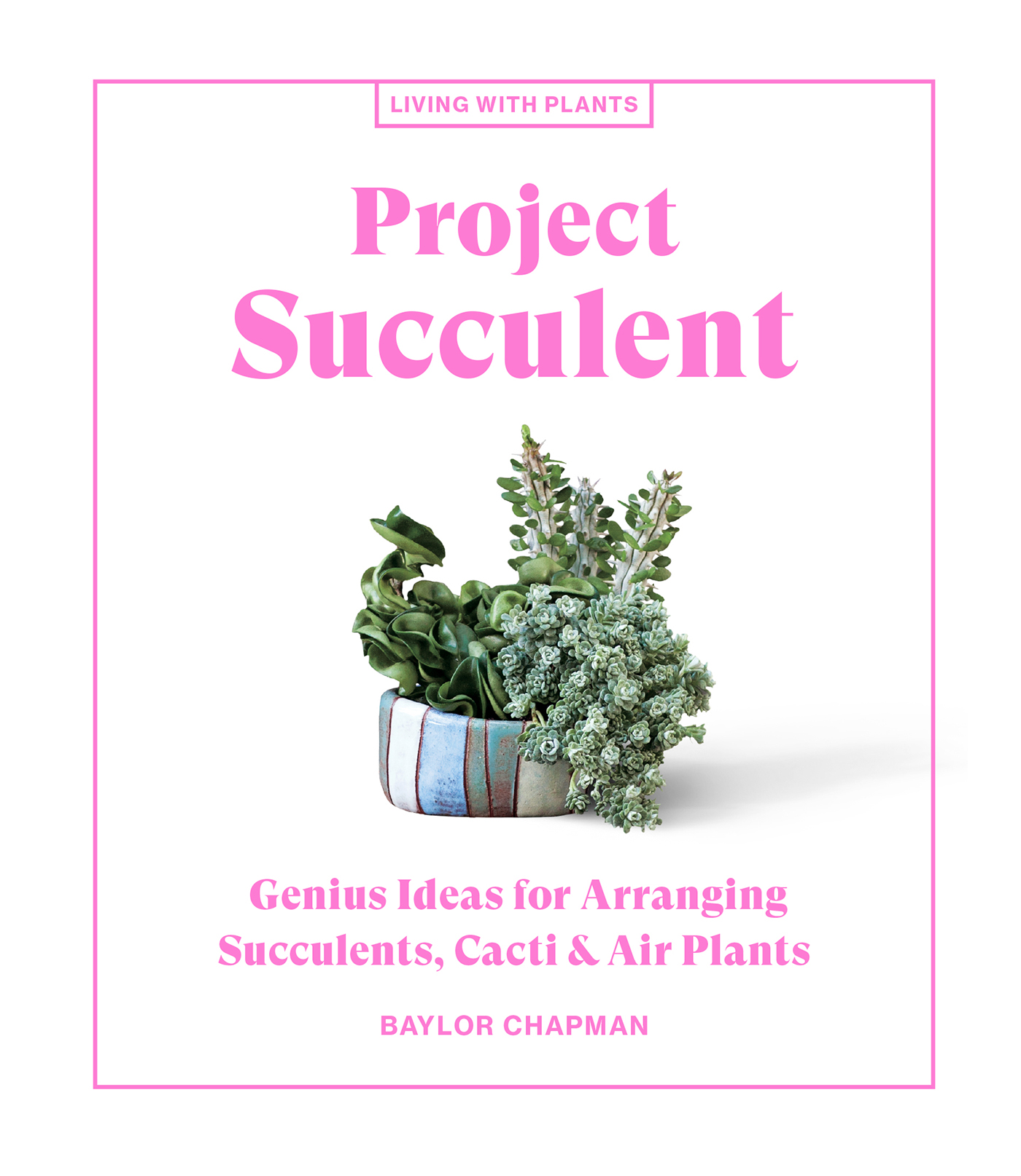
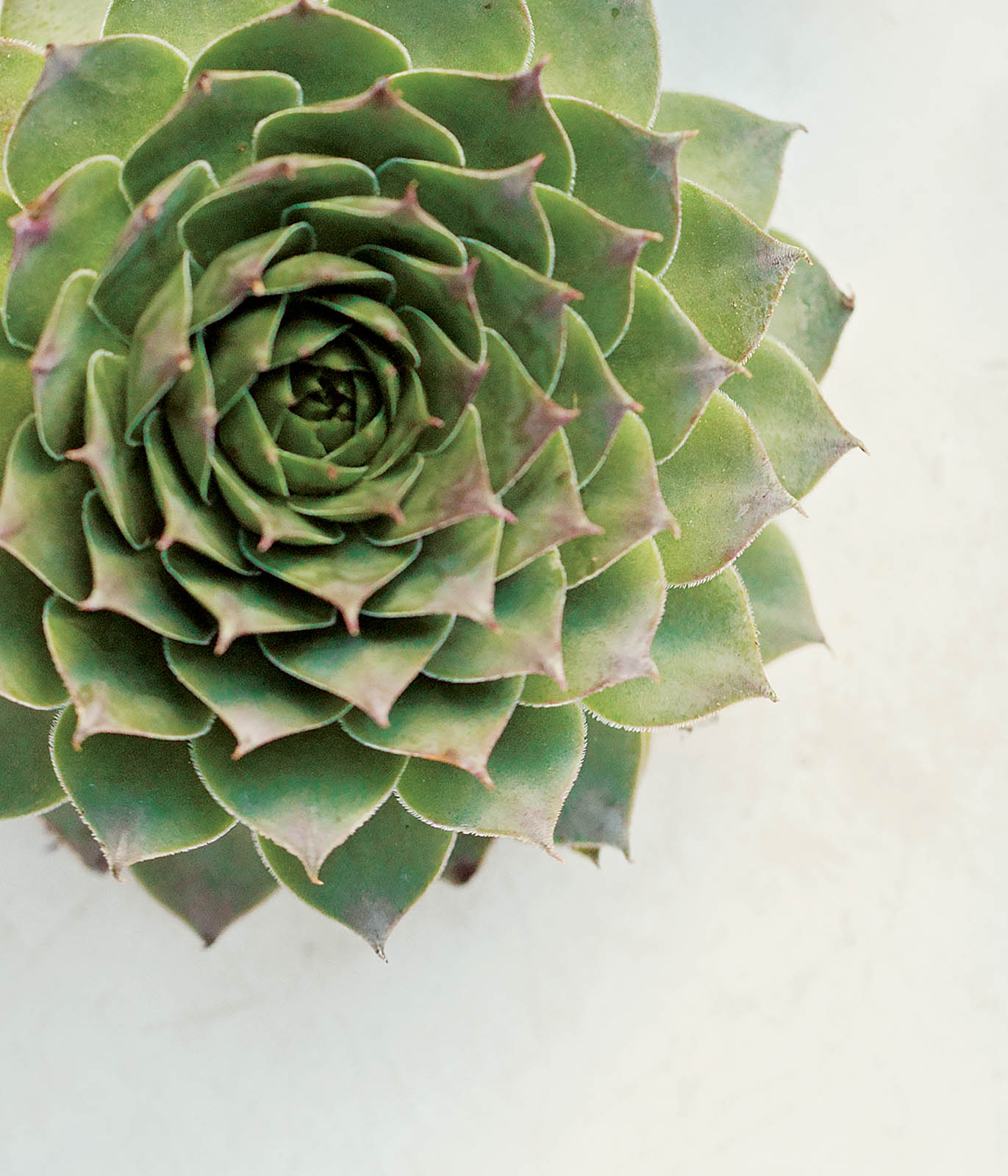
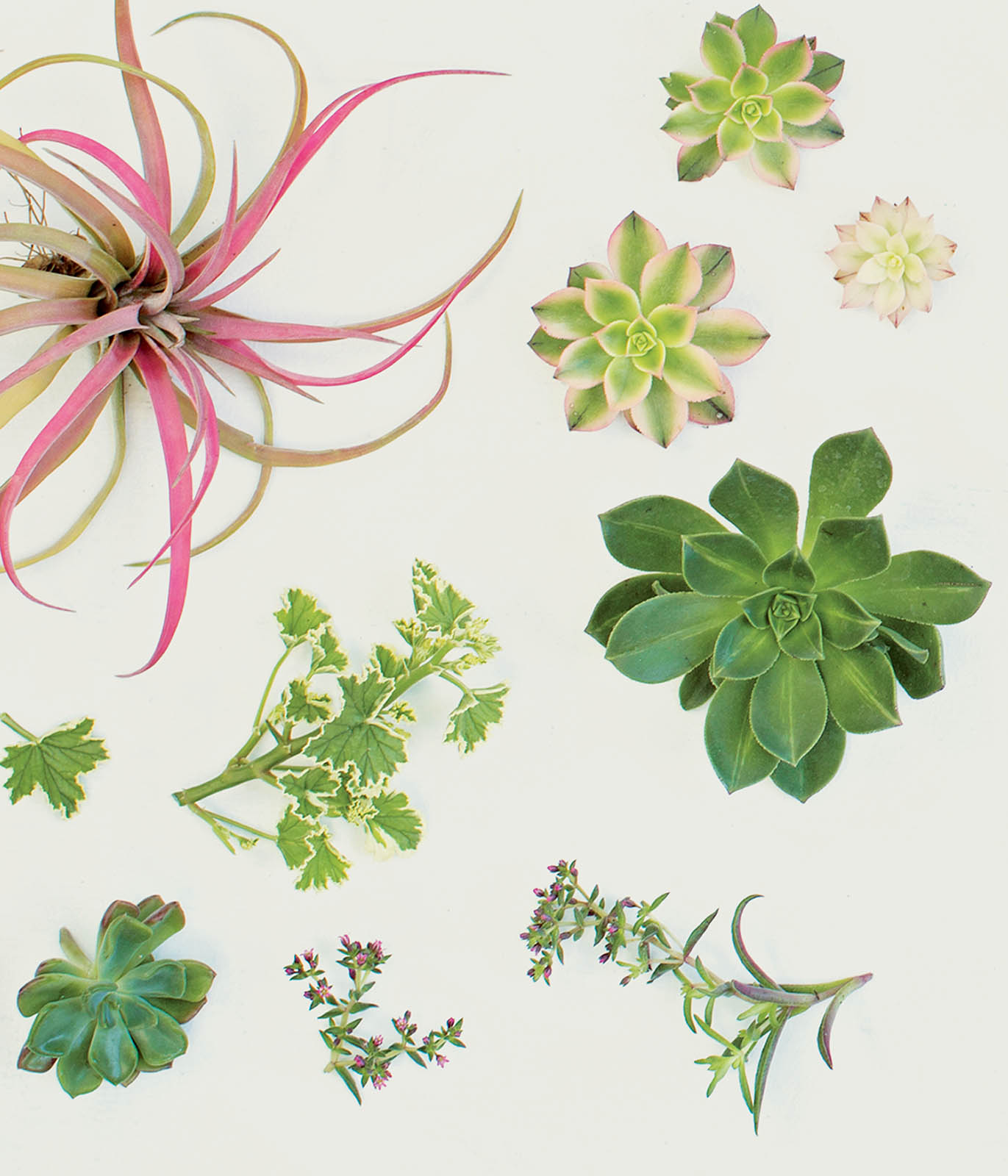 Project
Project
Succulent Genius Ideas for Arranging Succulents, Cacti & Air Plants Baylor Chapman photographs by paige green  To Lila, for imparting her love of natural beauty
To Lila, for imparting her love of natural beauty 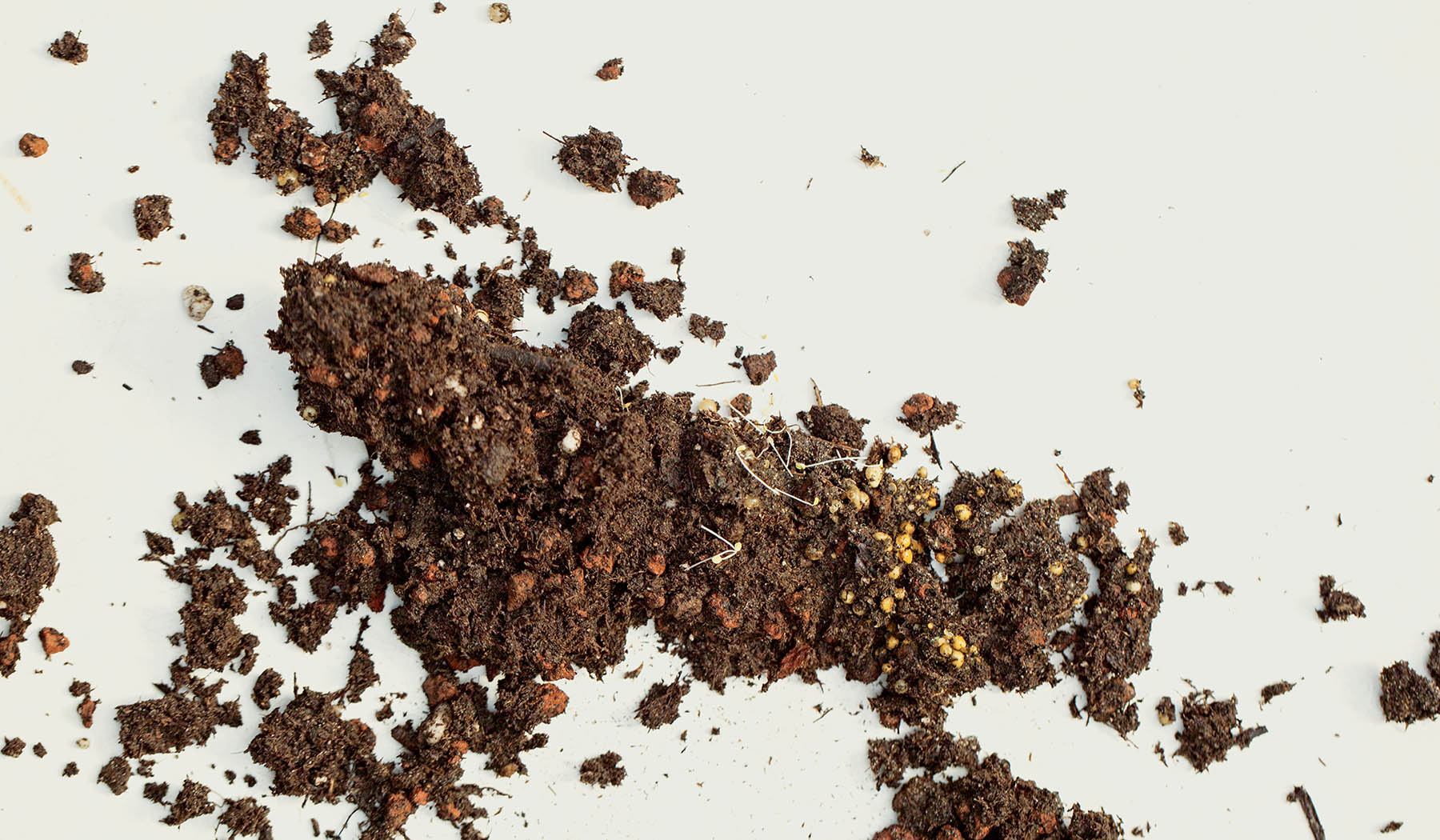 Contents Introduction Succulents are forgiving and fun to design with (no need to stick with a traditional terra cotta pot) and easy to grow. Its no wonder they have captivated the masses, from newbie plant parents to indoor jungle aficionados. In the following pages youll see that they thrive almost anywhere, like in old window shutters or tiny Jell-O molds. This versatility, combined with their hands-off care requirements and often friendly, compact sizes, makes them oh so captivating. If youve picked up a copy of this book, theyve likely gotten a hold on you already! To get down to the nitty-gritty, the word succulent comes from Latin: succulentus, meaning juicy or fleshy. These plants generally adapted from climates with erratic or infrequent water sources.
Contents Introduction Succulents are forgiving and fun to design with (no need to stick with a traditional terra cotta pot) and easy to grow. Its no wonder they have captivated the masses, from newbie plant parents to indoor jungle aficionados. In the following pages youll see that they thrive almost anywhere, like in old window shutters or tiny Jell-O molds. This versatility, combined with their hands-off care requirements and often friendly, compact sizes, makes them oh so captivating. If youve picked up a copy of this book, theyve likely gotten a hold on you already! To get down to the nitty-gritty, the word succulent comes from Latin: succulentus, meaning juicy or fleshy. These plants generally adapted from climates with erratic or infrequent water sources.
They evolved and honed their skills to store this precious resource into their own private water reservoirs. Some hold water in their leaves, like the thick, waxy aloe, while others have a protective exterior to retain moisture (see the fuzzy panda plants in ). Succulents ability to hold water isnt their only amazing attribute, though: They grow in so many shapes and sizes and fabulous colors and patterns, and some even flower! These characteristics apply to cacti and air plants, too. In this book, Im using the term succulent broadly and Ive included plants that can be considered a semi-succulent or fit the loose criteria of having fleshy, waxy, furry leavesor any way of holding on to a water source through means other than their roots. Air plants, for example, can utilize moisture in the air. Included here are cacti that are succulents (for not all succulents are cacti), air plants, and bromeliadsa kin to the air plant.
There are several plants that I use over and over and in a variety of combinations. To provide basic care requirements and interesting tidbits, Ive spotlighted a few of my favorites. They are listed alphabetically by their genus to help you find the specific plant used in the project. Dont worry too much if you cant find the exact same oneusing something of similar size and shape will create a slightly different but just as lovely arrangement. Or bust out and use a plant you think will add color, texture, or an interesting shape. Whether it is an elaborate living centerpiece or tiny single succulent, decorating with plants will make any space feel like home.
Dive in, get your hands dirty, and express yourself through beautiful, living art!  Getting Started
Getting Started
The Succulent Arrangement Toolbox
These tools are handy for everyday use with succulents and other plants. Coated Wire: To tie soft stems together or to a stake. Dropper/Squeeze Bottle: For watering tiny pots and terrariums. Glue Dots: These help hold cellophane in place. Mister: To water air plants gently. Paintbrushes/Shaving Brushes: Good for dusting plants.
Plastic Liner: to protect surfaces from getting wet. Pruning Shears OR SCISSORS: Used to trim bigger-stemmed plants. Screen: Covers drainage holes to stop roots from plugging up the hole and preventing drainage. Skewers: to create a stem for a succulent cutting. Small Angled Snips: Angled to prune tiny plants in tiny places. Small Snips: Used for pruning delicate plants.
Spoon OR Trowel: Used to transfer soil or gravel from the bag to the pot. Turkey Baster: Allows you to water in tight spaces. Tweezers: Great for reaching into tiny terrariums to arrange small plants, sticks, and stones. Watering Can: Designed precisely for watering. Waterproof Florist Tape: Used to seal cellophane or foil to make them watertight. 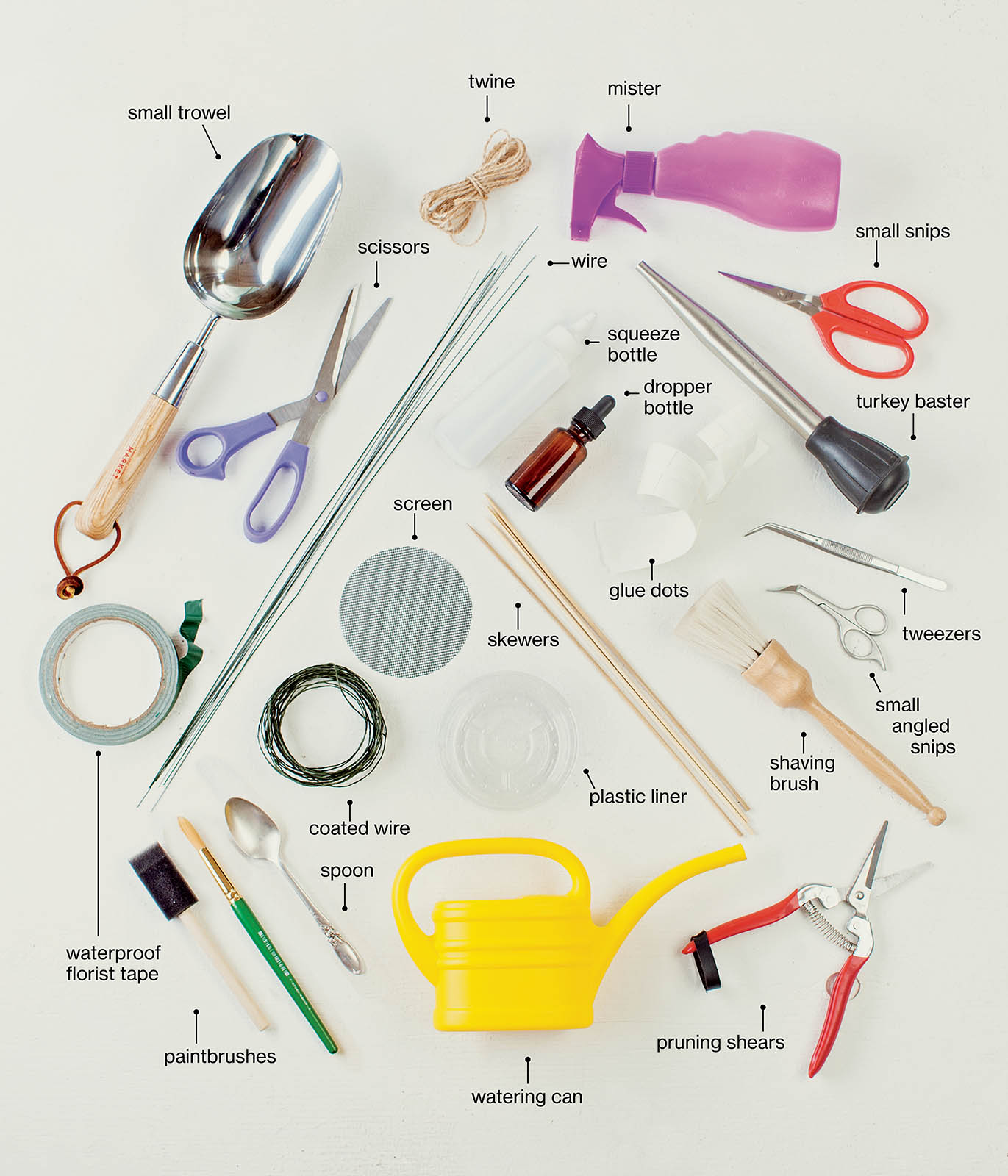
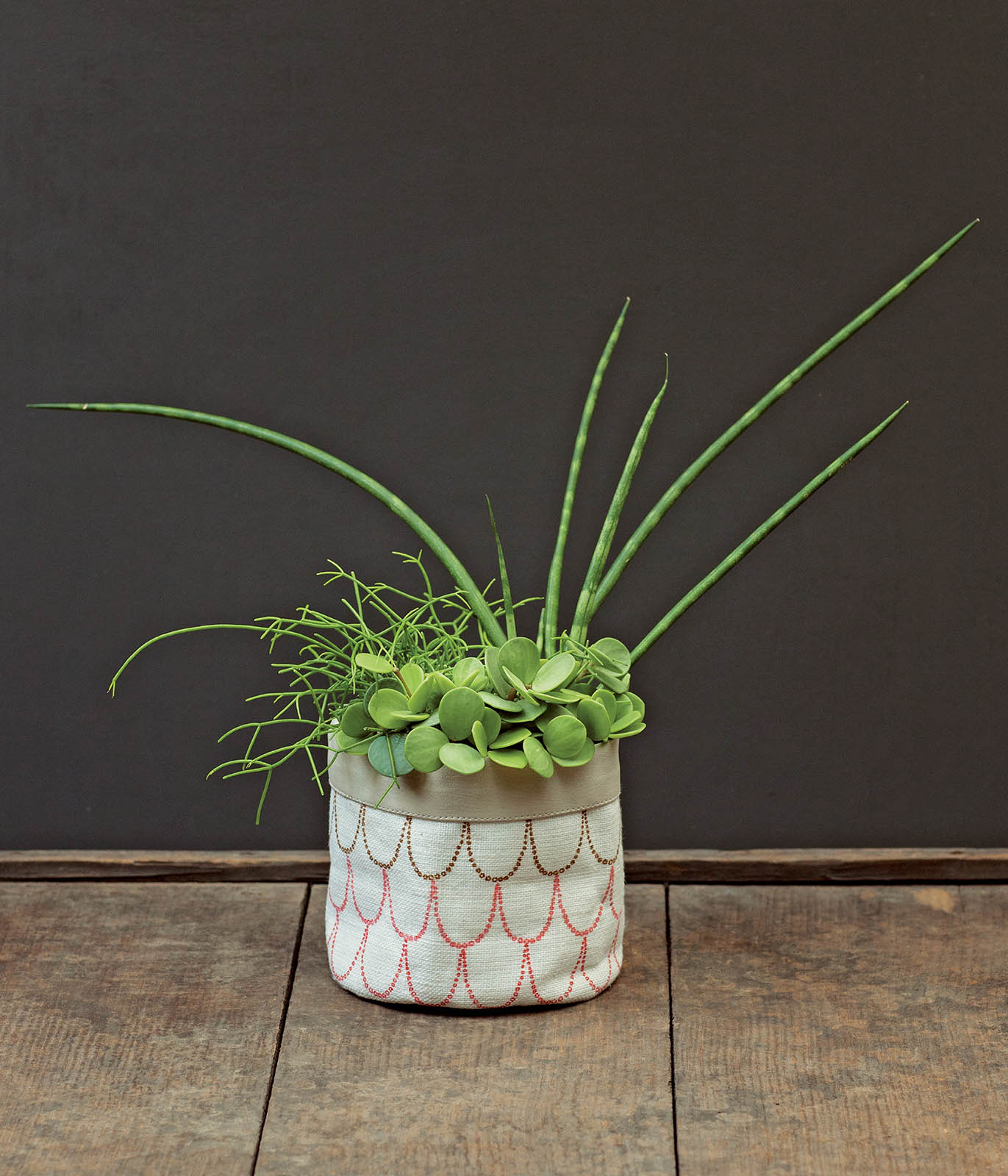 A patterned basket or pot can be a fun alternative to a traditional vase.
A patterned basket or pot can be a fun alternative to a traditional vase. 
 A patterned basket or pot can be a fun alternative to a traditional vase.
A patterned basket or pot can be a fun alternative to a traditional vase.
Here the U-shape pattern on the fabric basket complements the arrangement by mimicking the shape of the peperomia (Peperomia Hope; shown here front and center, with rhipsalis [Rhipsalis capilliformis] to the left and a spear plant [Sansevieria cylindrica] to the right). Just make sure you protect furniture from water leaks with an impermeable liner or dish.
Choosing Your Container
Dont be constrained by the notion that plants belong in traditional pots. Look around the housealmost any vessel (and youll see that term is used lightly here!) can hold a plant. Bowls, cookware, even cups can accommodate container gardens. Pieces of pipe, picture frames, and branches can all be fashioned so that they house gardens, too.
First, consider the growing conditions. The garden will do best and be easiest to care for when the container and the plant(s) in it match up to some extent. Pots with drainage holes are best. This guarantees no swimming pools (and rotting roots) at the bottom of a watertight bowl. Does the plant like conditions that are dry? A widemouthed low bowl will do the trick. Second, consider size.
Will the plant(s) fit in the container? Think too about the needs of the soil and roots along with those of the plant itself. Succulents usually dont mind the squeeze and can be tightly packed in. Air plants can be set side by side and dont even need soil in most cases. Also, consider scale: how the plant arrangement looks in the pot. To determine if your plant arrangement is properly to scale, you need to consider it in relation to the vessel. As a general guideline, planters should be roughly one-third the height and/or width of your plant.
For a more Zen design, try the opposite balance. Next, consider color. Sometimes the right color container can make your arrangement sing while another color can make it look drab. For example, the slight hint of yellow in the Aeonium may pop if you place it in a yellow pot, whereas it might disappear in a green one. Finally, think about the overall look. Is your desired plant design classic or woodsy? A cluster of Sempervivum may look more comfortable in a dried date palm than in a flashy neon bowl (although sometimes such contrasts look fabulousand rules are meant to be broken).
Other times its best to just let the plant(s) show off. The vertical, spiky legs of the crown of thorns plant, for example, look spectacular when placed in a short clay pot that contrasts the stature and barbs of this unique plant. 
Next page

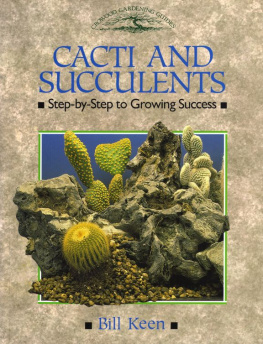
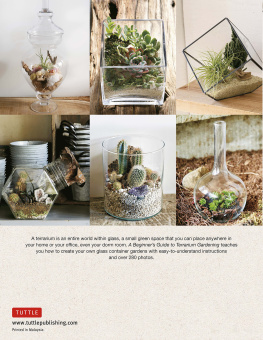
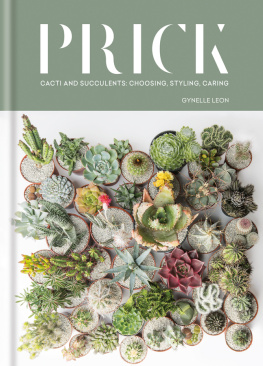

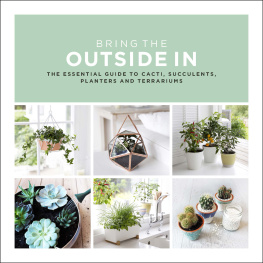
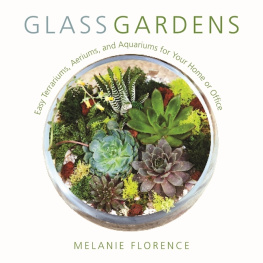
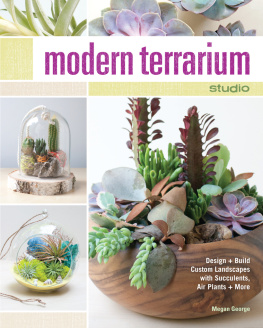



 Project
Project To Lila, for imparting her love of natural beauty
To Lila, for imparting her love of natural beauty  Contents Introduction Succulents are forgiving and fun to design with (no need to stick with a traditional terra cotta pot) and easy to grow. Its no wonder they have captivated the masses, from newbie plant parents to indoor jungle aficionados. In the following pages youll see that they thrive almost anywhere, like in old window shutters or tiny Jell-O molds. This versatility, combined with their hands-off care requirements and often friendly, compact sizes, makes them oh so captivating. If youve picked up a copy of this book, theyve likely gotten a hold on you already! To get down to the nitty-gritty, the word succulent comes from Latin: succulentus, meaning juicy or fleshy. These plants generally adapted from climates with erratic or infrequent water sources.
Contents Introduction Succulents are forgiving and fun to design with (no need to stick with a traditional terra cotta pot) and easy to grow. Its no wonder they have captivated the masses, from newbie plant parents to indoor jungle aficionados. In the following pages youll see that they thrive almost anywhere, like in old window shutters or tiny Jell-O molds. This versatility, combined with their hands-off care requirements and often friendly, compact sizes, makes them oh so captivating. If youve picked up a copy of this book, theyve likely gotten a hold on you already! To get down to the nitty-gritty, the word succulent comes from Latin: succulentus, meaning juicy or fleshy. These plants generally adapted from climates with erratic or infrequent water sources. Getting Started
Getting Started
 A patterned basket or pot can be a fun alternative to a traditional vase.
A patterned basket or pot can be a fun alternative to a traditional vase. 